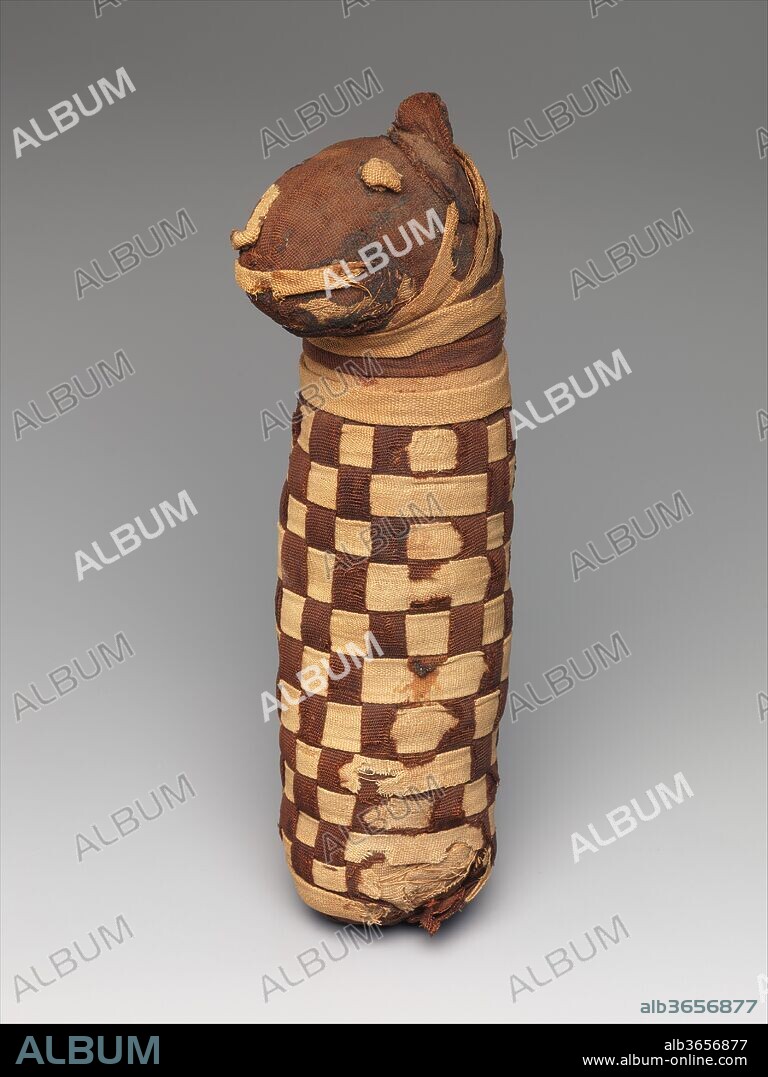alb3656877
Sacred animal mummy containing dog bones

|
Ajouter à une autre Lightbox |
|
Ajouter à une autre Lightbox |



Avez-vous déjà un compte? S'identifier
Vous n'avez pas de compte ? S'inscrire
Acheter cette image

Titre:
Sacred animal mummy containing dog bones
Légende:
Voir la traduction automatique
Sacred animal mummy containing dog bones. Dimensions: H. 28 cm (11 in.); W. 6.5 cm (2 9/16 in.); D. 10 cm (3 15/16 in.). Date: ca. 400 B.C.-100 A.D..
Animal cults
The Egyptians considered certain individual animals to be living manifestations of a god, such as, since earliest times, the Apis bull . Those individuals were duly mummifed when they died and buried for eternal life, then replaced by another single living manifestation. During the first millennium BC, many multiples of animals associated with certain gods were specially raised in temple precincts as simultaneous avatars of that god and then mummified in large contingents and deposited in catacombs for eternal life. The ancient perception of these multiples, the evolution of the practice in this direction, and variations within the practice are not easily accessible to us. But the hundreds of thousands of often elaborately prepared animal mummies found in catacombs and other locales testify to its ancient resonance.
Animal mummies
Research on animal mummies has shown that the majority of mummies found at the large animal cemetery sites are pre-adults who were purposely killed for use. Some of the mummies are actually 'substitute' mummies containing only a few bones or feathers or possibly just sticks or sand.
Recently a review of the museum's animal mummies and their x-rays was conducted in consultation with an expert in their study, and brought to light a number of interesting points. In this particular case the wrappings have a checkerboard pattern created with darker and lighter colored linens, and the head is wrapped and given outer details in linen representing the eyes, mouth, and ears of the animal. The body inside the wrappings is not complete, only a few rib bones can be seen. Long considered - with 13.182.49 - to be a cat, the bones are probably those of a dog. Many related dog mummies have been found in modern work at the site from which this one derives.
Technique/matériel:
Dyed and undyed linen, animal remains, mummification materials
Période:
Late Period-Roman Period
Musée:
Metropolitan Museum of Art, New York, USA
Crédit:
Album / Metropolitan Museum of Art, NY
Autorisations:
Modèle: Non - Propriété: Non
Questions sur les droits?
Questions sur les droits?
Taille de l'image:
3203 x 4268 px | 39.1 MB
Taille d'impression:
27.1 x 36.1 cm | 10.7 x 14.2 in (300 dpi)
 Pinterest
Pinterest Twitter
Twitter Facebook
Facebook Copier le lien
Copier le lien Email
Email
